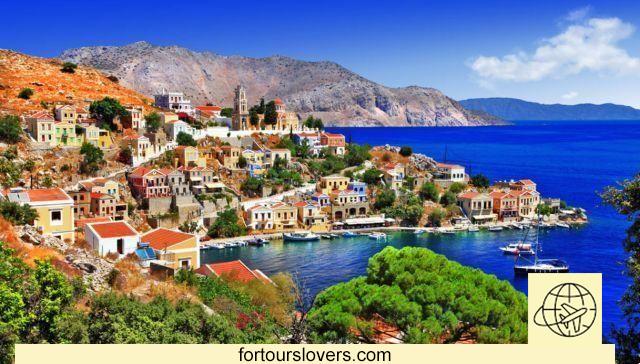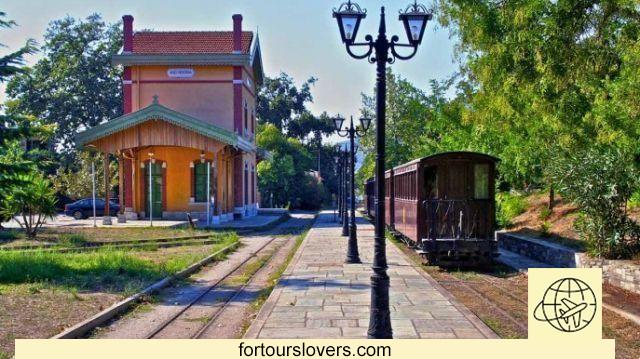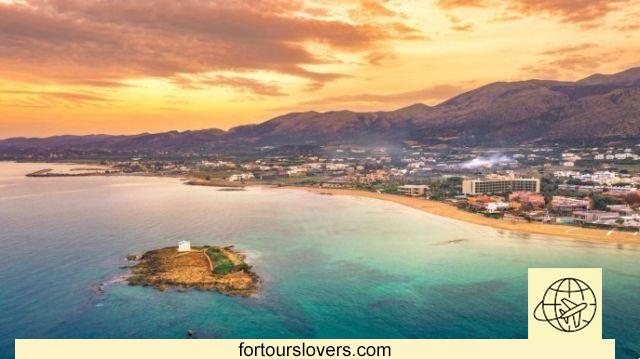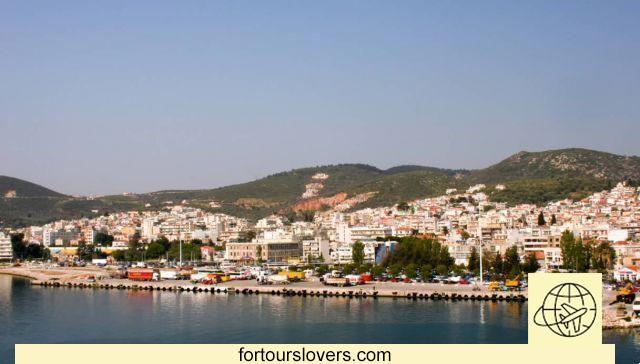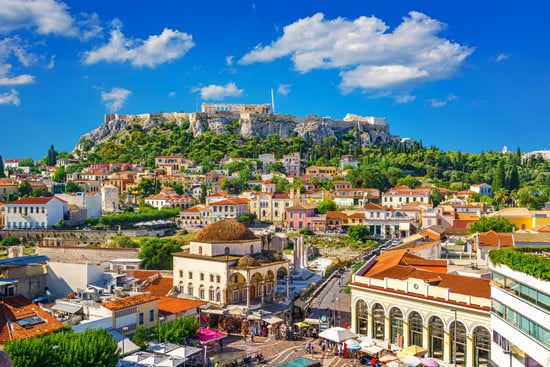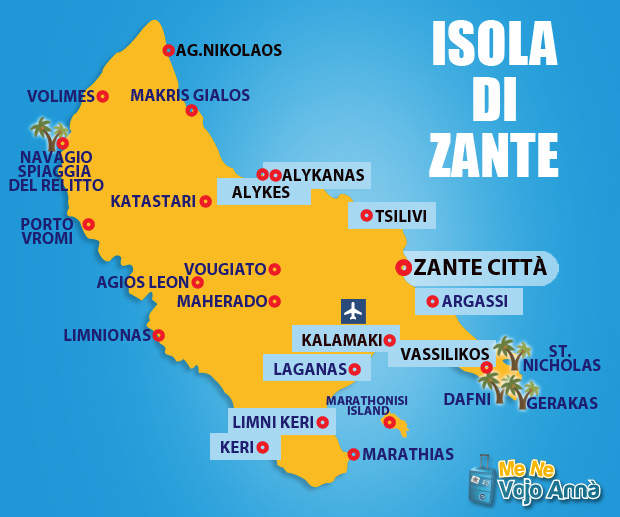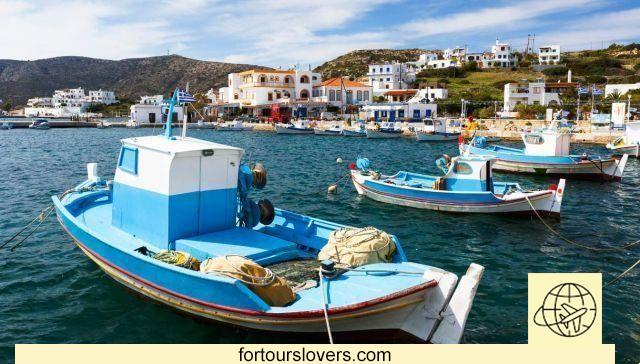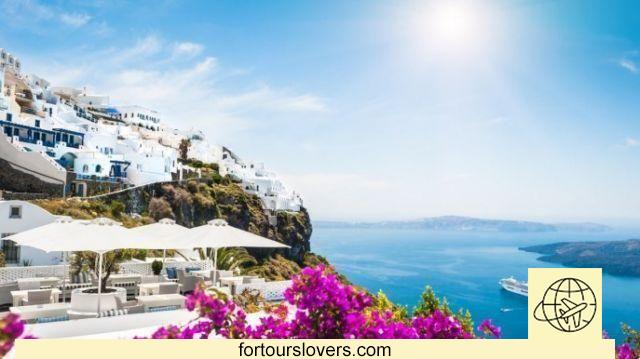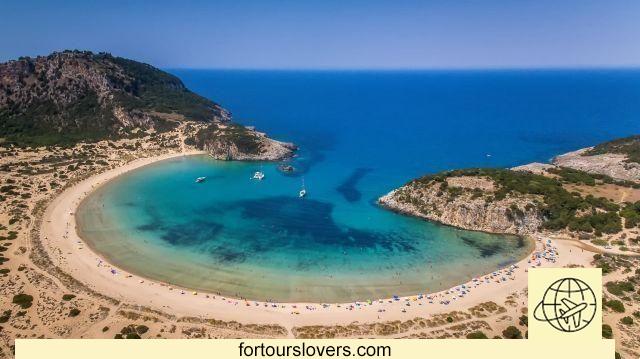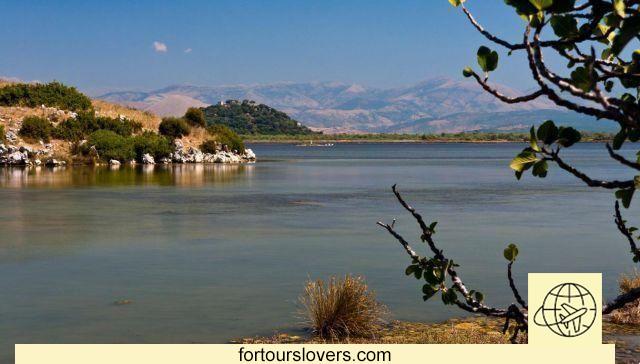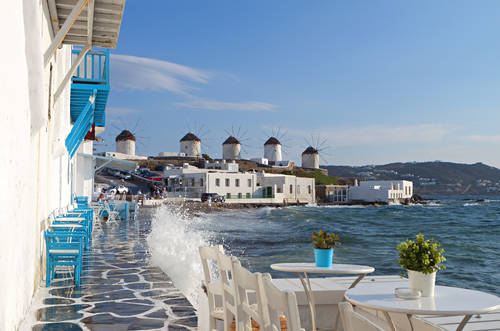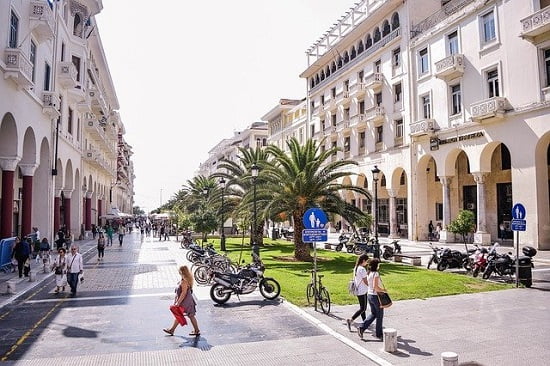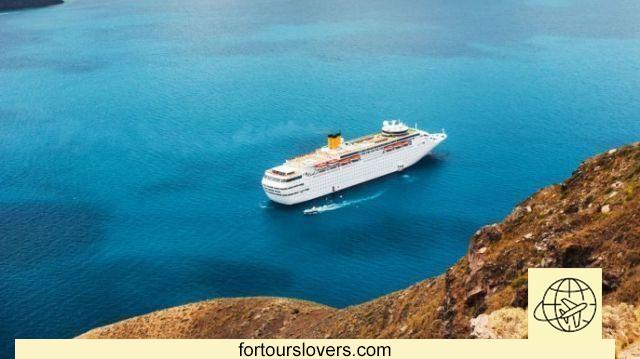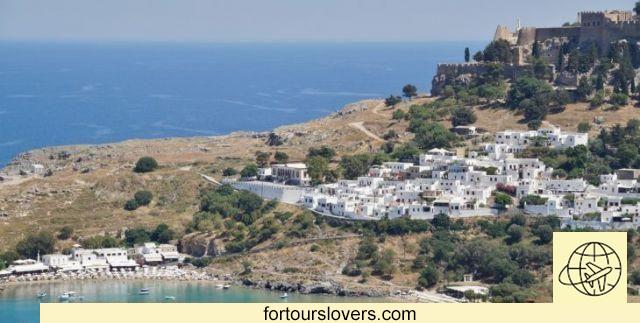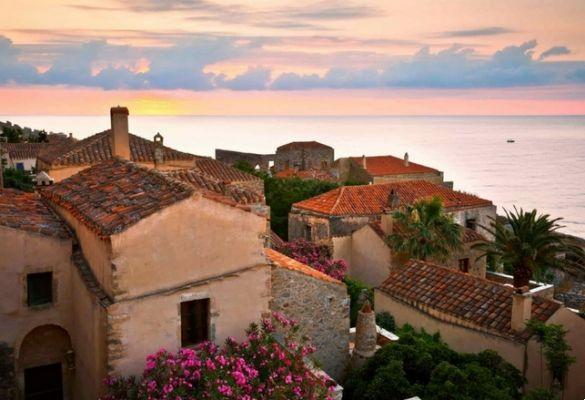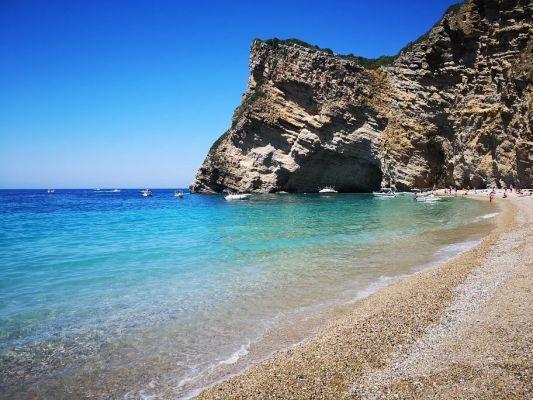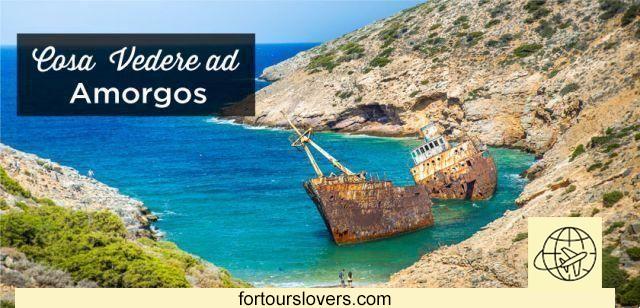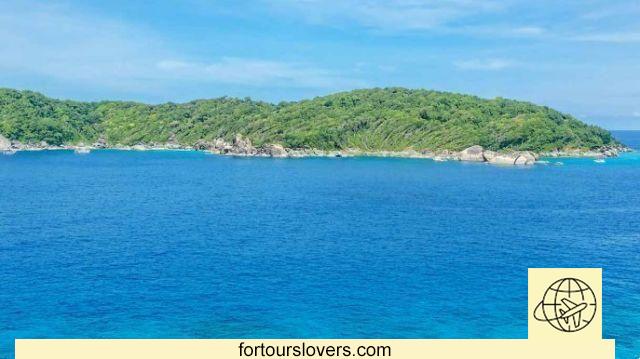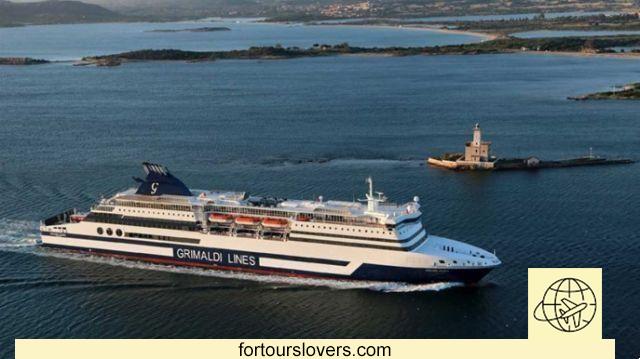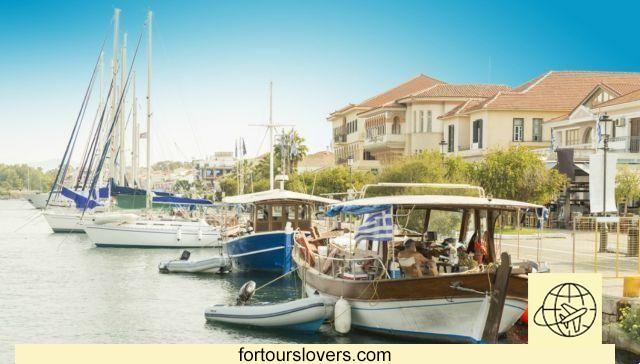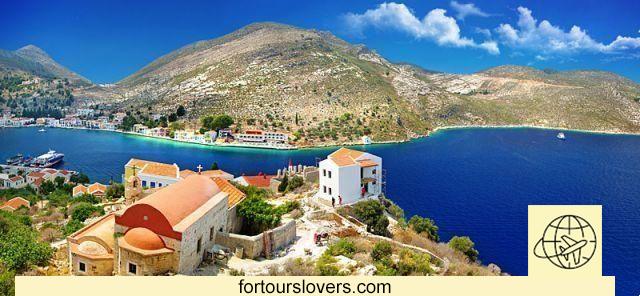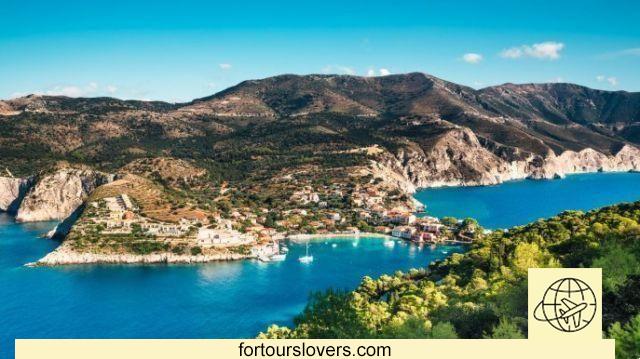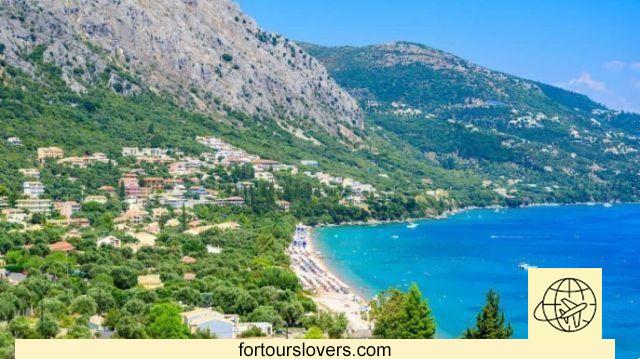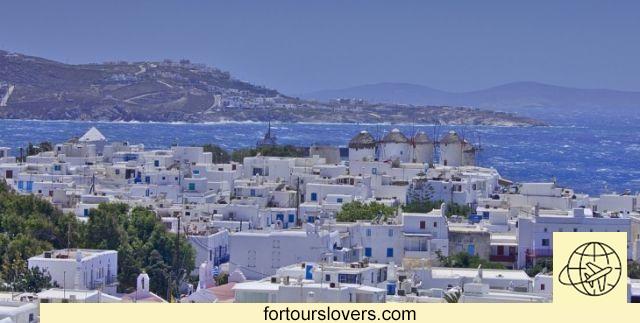
Mykonos
12 things to do and see in Mykonos and 1 not to doMykonos is the island of the stereotypes. That of Mediterraneity, because of the white houses, the colored windows, the flowered balconies and the narrow streets; and the more recent one of "Club culture", the disco music subculture born in England in the 80s and which then took root all over the world. Techno, house, commercial, minimal, garage: for those who love these sounds, Mykonos is definitely the right place. Of course there are beaches, bars, restaurants, hotels (see the hotels recommended on Booking.com) and everything you need to meet the needs of the millions of visitors, mostly young and very young, who flock here from all over. of the world. Yet, despite being a "fun factory", Mykonos manages to be something else. To realize this, however, it is preferable to come in spring or autumn when the island is not overcrowded. In these periods of the year (May, June, September, October) the island shows its most authentic face, giving guests the opportunity to explore scenarios and landscapes of rare beauty without "ball" music and decidedly eccentric characters. In conclusion, Mykonos winks at everyone: to those who love to travel alone; to those looking for a bit of worldliness; to those who want to transgress and to romantics in search of breathtaking views and poignant sunsets. Below, our list of things to do and see on the island. Happy reading.
1 Matoyianni Street
Matoyianni is the street of Shopping and movida of Mykonos. It is a long and narrow street that begins near the old port and almost reaches Little Venice, a district of the island so called because of the houses on the water like in Venice. Along the way, shops of all kinds: fromhigh fashion, pret a porter, until the merchandising and to local more or less ethnic. It applies to clothing; also applies to restaurants and pubs that fully reflect the cosmopolitan vocation of this island. What is surprising is that despite the overcrowding, due to the daily landing of cruise passengers which are added to the many tourists already present, Matoyianni preserves the characteristics of the greek urban fabric. Just get lost in one of the many alleys that branch off from the main artery to find all the typical elements ofCycladic architecture: white houses, blue windows and portals, flowered balconies and more generally a sense of order that is not due to adaptation to any predetermined urban design, but rather to the implicit respect of some stylistic canons very specific. Always beautiful, even in the morning, even wonderful in spring and September when the crowds are less than in the high season.
2 Little Venice
Little Venice is one of the symbolic places of "Chora" (Greek term that roughly indicates the urban center of the city). The architecture is typical, Mediterranean, which characterizes the whole island with the difference, however, that the first row of houses "floats" on the water just like in Venice. Hence the name of the place, even if there are no other similarities since it is, for the rest, a district that has very little cultural. Shops, restaurants, bars and pubs are the masters as in the rest of the island. But if you are on the hunt for suggestions, as well as fun, the advice is to come to sunset. The sun tinges the surf with gold, giving another color to an already colorful neighborhood of its own.
3 The church of Panagia Paraportiani
La Ortodox church most famous of Mykonos is located in Kastro district, not far from Little Venice. Panagia Paraportiani is the singular architectural result of the fusion of four small churches built close to each other from the XNUMXth to the XNUMXth century (their names: Agios Sozontas, Agioi Anargyroi, Agia Anastasia, Agios Efstathios). Unfortunately it is almost always closed, and therefore you have to be content with admiring it from the outside as do the many tourists who daily gather in the area to admire the beautiful sunset of the island. The lime white of the building enhances the intense colors of Mykonos sunset. For lovers of photography this is one of the places you have to come to get those out memorable shots to which then you end up very fond of. To be seen!
4 Mills
Built in the 400th century, for over XNUMX years the mills of Mykonos have represented a fundamental voice in the local economy. There grain grinding cultivated on the island was not only used to meet internal needs but also opened important routes to the population in foreign trade in flour. When tourism finally took over agriculture and commerce, the mills were promptly retrofitted into attraction. Repainted and renovated, they are now the ideal place for the classic Memory picture. And what I remember, one might say, to see the panorama gorgeous that opens all around. One of the mills has also been transformed into museum with photo e Captions in English e Greco to tell the story and the commercial importance of this activity fueled by strong winds that blew - and still blow - on the island. The locality is called Kato Myli and is easily accessible from the center of the island. Near the mills there is also a parcheggio for those arriving by car or scooter. The area is also conveniently served by bus line.
5 Armenistis Lighthouse
Those who feel the need to escape from the wild nightlife of Mykonos runs up here to enjoy the landscape and one of the sunsets most beautiful in the world. The road is unpaved; the structure is a ruin; but it doesn't matter: the Armenistis lighthouse offers a panorama truly unique. Don't let the negative reviews on the net influence you. Some have written that in Mykonos even what is "old", "dilapidated", "traditional" is part of the same spectacle as boutiques, restaurants and trendy clubs. Well, the old lighthouse fully confirms this impression. The view sweeps, almost seamlessly, between earth, sky, sea, shabby houses and luxury villas. Wonderful Greek paradoxes.
6 Ano Mera
Who really wants to get to know Mykonos, forget about Matoyianni Street, Little Venice, the shops, clubs, hotels, the nocturnal rink and head towards Ano Mera, small village 8 kilometers east of Chora. Of course, tourism has also arrived here with hotels and apartments but in general the atmosphere is still slow and staid as it once was. In short, the "Genius loci" he lives here in Mykonos and two clues are enough for the discerning visitor to realize it: the first is the square with its four taverns so profoundly different from the rarefied environments of the clubs around the old port; the second, actually more important than the first, is the Monastery of "Panagia Tourliani" right in the center of the village. Several things to see: from Bell tower, To marble fountain in the center of the courtyard, up to the internal exhibition of sacred vestments area of Byzantine tradition. The architecture of the village is typically Mediterranean or, as it is even more correct to say, typically Cycladic. The white of the houses, in fact, is like this "generous”To leave space and attention to the colors of the doors, windows and flowered balconies. Buses from the port serve Ano Mera very frequently. To be seen!
7 Island of Delos
A little more than three miles from Mykonos, the island of excesses and fun, there is another one which is completely uninhabited. We are talking about Delos, the cradle of Apollo e Artemide, the gods of the sun and moon. Unesco World Heritage since 1990, Delo is a huge archaeological site where excavation operations have continued uninterrupted since the end of the 426th century. Not surprisingly, it is strictly forbidden to stay overnight on the island with the sole exception of the archaeologists present. This circumstance, among other things, has allowed the tourist story to “update” an episode of fundamental importance in the history of the island. In the winter between 425 and XNUMX BC, in fact, the Athenians decided to "purify" the island for religious purposes, first transferring the remains of the dead buried there and later ordering the exile of all the local population. Delos thus rose to the rank of "sacred island", a status reaffirmed by the Athenians with the construction of a temple dedicated to Apollo. Naturally, the history of the island continued with ups and downs until the first century BC, even if this episode is the one on which the tourist press plays the most. Several shipping companies (ferries or traditional boats) that connect Mykonos to nearby Delos daily. Not to be missed!
8 The Museums
Granted, cultural tourism is not exactly the strong point of Mykonos, nevertheless the island offers a lot from this point of view too. Especially the Archaeological Museum, which hosts many ceramic finds from the nearby islands of Rhina, Paros e Delo. Also interesting is the Maritime Museum. Inside there are several naval models of the pre-Mycenaean fleet, as well as a whole other set of objects (anchors, rudders, navigation books). And that's not all, because there are the Folklore Museum, Agricultural Museum and, last but not least, the pretty one Lena's house, authentic traditional home of the Mykonos bourgeoisie. A precious testimony of the ancient social stratification of the island, before tourism approved everything. The poor lived in fact in the small houses of the dense maze of alleys of Chora; the rich, on the other hand, mostly shipowners, the houses of Little Venice. In between, the bourgeoisie: traders, teachers, notaries, etc. who lived in pretty houses with a small terrace on the street, a large living room, two bedrooms and an external courtyard with a bathroom. Island life.
9 The beaches
There are 14 in all and each offer a different suggestion. Paradise e Superparadise they are the beaches of those who love to party: drinks, loud music and characters definitely over the top; Kalo Livàdi, Psara they are probably the most beautiful from a landscape point of view; Kalafatis it is ideal for surfers, windsurfers and kitesurfers; Elijah (in the photo), for nudists (nudism is also practiced on the Superparadise beach); Paranga for families with children in tow; Platys Gialos e Panormos for the (relative) greater tranquility etc. In short, the beaches confirm what was written at the beginning: Mykonos tries to please everyone. Ultimately, however, the whole coast of the island has undergone an intense and fast tourist development that perhaps makes those who expect almost deserted beaches and unspoiled nature turn up their noses. It must be said that a May, June e September the scenario changes compared to the chaos of July and August. So if to the worldliness you want to combine a little healthy Relax these are the best months for a holiday in Mykonos.
10 dives
Mikonos is not alone sea, beaches, surf e by night. Another important tourist segment is the Diving. Every year thousands of fans choose the island for its spectacular nature diving. Obviously, there are those for beginners and others, instead, exclusively within the reach of experienced divers. There is no shortage of equipped diving centers which, in addition to diving, also offer courses snorkeling aimed at adults and children. In short, don't forget to pack your mask and snorkel in your suitcase. It is absolutely worth it!
11 Nightlife
Elegant cafes, trendy clubs and gay-friendly places. In Mykonos there is the nightlife craziest in all of Greece. From parties on the beaches of Paradise e Superparadise Beach, To groove-bar by Matoyianni, until discotheques where the most famous international DJs of the moment perform: on the island every excuse is good to party at any time of day or night. After all, we have warned you from the beginning: Mykonos, like Ibiza in Spain, is a 'Dionysian island, an unbridled entertainment industry. Those looking for something else will do well to go elsewhere or visit the island in months other than July and August. We have fun all the same, the excesses are the same, but the rhythms are less unrestrained than in the two months of the high season. In conclusion, Mykonos is an island that never sleeps!
12 What to eat
Let's start by saying that in the kitchen of Mykonos olive oil, vegetables, Origan, garlic, basil and all the other ingredients of the Mediterranean diet are the masters. Ditto also with fish, rigorously fresh. In Chora restaurants abound grilling e fried fish as only in the best Mediterranean tradition. Things change a little with the meat, where theTurkish influence even if the level of the dishes remains absolutely excellent: try the baked lamb (kleftiko) and grilled (souvlaki), without forgetting the mythical gyros (similar to Turkish kebab), accompanied by the referee, the round and flattened bread very popular in Greece and throughout the Middle East. As for the wine there is retsina, the Greek table wine, even if the inhabitants of Mykonos drink with the same tasteouzo, anise-flavored liqueur often consumed in aperitifs before lunch and dinner. The local cheese, then, is a real excellence: we are talking about kopanisti, mixed milk cheese (sheep, cow, goat) with a strong and spicy taste. It is also produced on the other islands of the Cyclades archipelago although, in an almost unanimous opinion, that of Mykonos is the best of all. Of course being one tourist resort with a cosmopolitan vocation in Mykonos the cuisine is international. In short, we eat and, above all, drink everything in accordance with that Dionysian spirit which made the economic fortunes of the island. Therefore, eat, drink and enjoy, but in moderation!
1 Don't come in August if ...
We have said it several times, but it should be reiterated. From mid-July and throughout August Mykonos is a wild island. Excess is the rule; the island is frequented mainly by young people who spend their own days between beach and disco seamless. So if you are looking (also) for something else, better discard this time of year. Another reason to avoid Mykonos in August is the meltemi (μελτέμι in Greek). It is a cool wind that blows along the coasts of the Greece and Turkey. It accompanies the whole summer season of the Cyclades archipelago, but in August it becomes particularly annoying. For the rest, there are no particular contraindications. If what you are looking for is chaos and Augustan atmospheres, you would do well not to follow my advice. If, on the other hand, August is the only period available and you wish to visit Greece, you can allocate the space of one to Mykonos weekend. In this case, three days of nightlife can even be healthy. Points of view.




